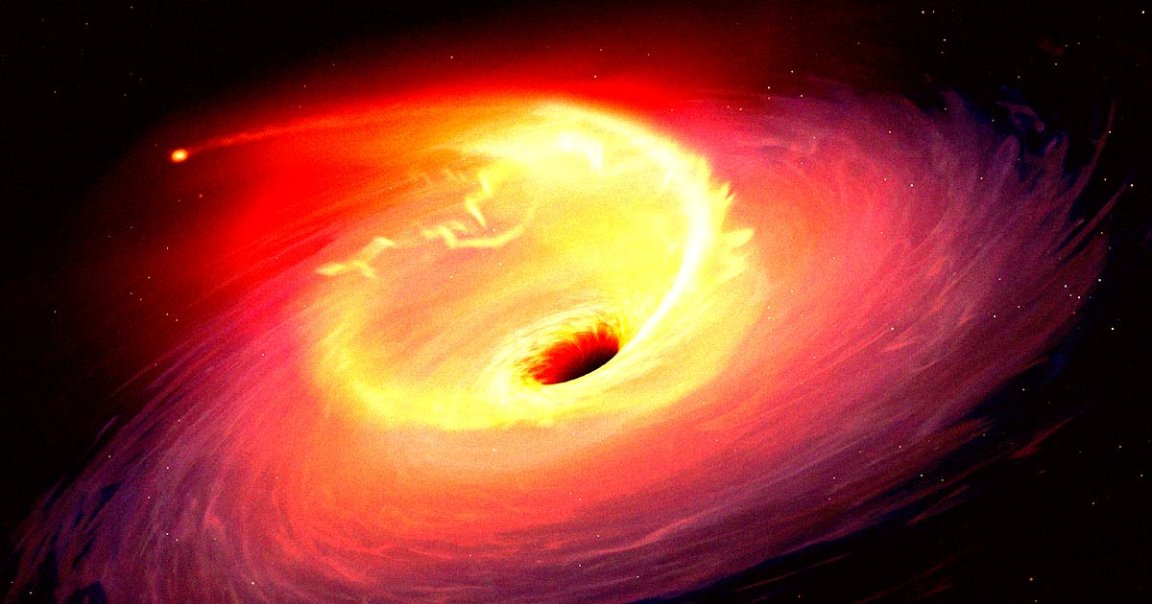
Hungry Hungry
Astronomers have spotted a black hole that dates back to just 1.5 billion years after the Big Bang — and the ancient monster is gobbling up matter at an astonishing rate.
According to the scientists’ calculations, the black hole — dubbed LID-568 — is consuming matter at a whopping 40 times what had been believed to be the theoretical limit.
The discovery, as detailed in a paper in the journal Nature Astronomy, could help explain why supermassive black holes were able to grow to their immense sizes over a relatively short period of time, speaking on a cosmic time scale.
The team, led by International Gemini Observatory astronomer Hyewon Suh, used NASA’s James Webb Space Telescope to look at a group of galaxies that release copious amounts of X-rays.
Thanks to the telescope’s highly sensitive near-infrared spectrograph, the team made an unexpected discovery: a black hole gorging itself on surrounding mass at an unprecedented rate.
“This serendipitous result added a new dimension to our understanding of the system and opened up exciting avenues for investigation,” said Suh in a statement.
Gobbled Up
According to their observations, LID-568 is feeding on matter at 40 times its Eddington limit, a value that represents the theoretical limit of how much matter a black hole can accrete while still maintaining an equilibrium between the gravitational forces holding it together and the opposing forces of the heat its core is generating.
“This black hole is having a feast,” said coauthor and International Gemini Observatory astronomer Julia Scharwächter in a statement.
The findings could help explain previous observations of extremely massive black holes, which typically take billions of years to form but date back to the very earliest days of the universe, mere hundreds of millions of years after the Big Bang.
“This extreme case shows that a fast-feeding mechanism above the Eddington limit is one of the possible explanations for why we see these very heavy black holes so early in the universe,” Scharwächter added.
Other theories suggest that dark matter, the hypothetical stuff that doesn’t interact with light or radiation but makes up an estimated 85 percent of the total mass of the universe, may have enabled the rapid growth of early supermasssive black holes.
The team suggests that LID-568 may have gorged itself on matter in a single episode of accretion, and grew either out of “heavy seeds,” collapsed gas clouds, or “light seeds,” which are the result of the death of the universe’s first stars.
“The discovery of a super-Eddington accreting black hole suggests that a significant portion of mass growth can occur during a single episode of rapid feeding, regardless of whether the black hole originated from a light or heavy seed,” Suh explained.
The researchers suggest that powerful outflows of gas observed emerging from LID-568’s center may be serving as a “release valve” that prevents the system from “becoming too unstable,” allowing it to exceed its Eddington limit.
They’re now hoping to have an even closer look using the JWST to confirm their suspicions.
More on black holes: The Early Universe Was Absolutely Littered With Black Holes, Scientists Find